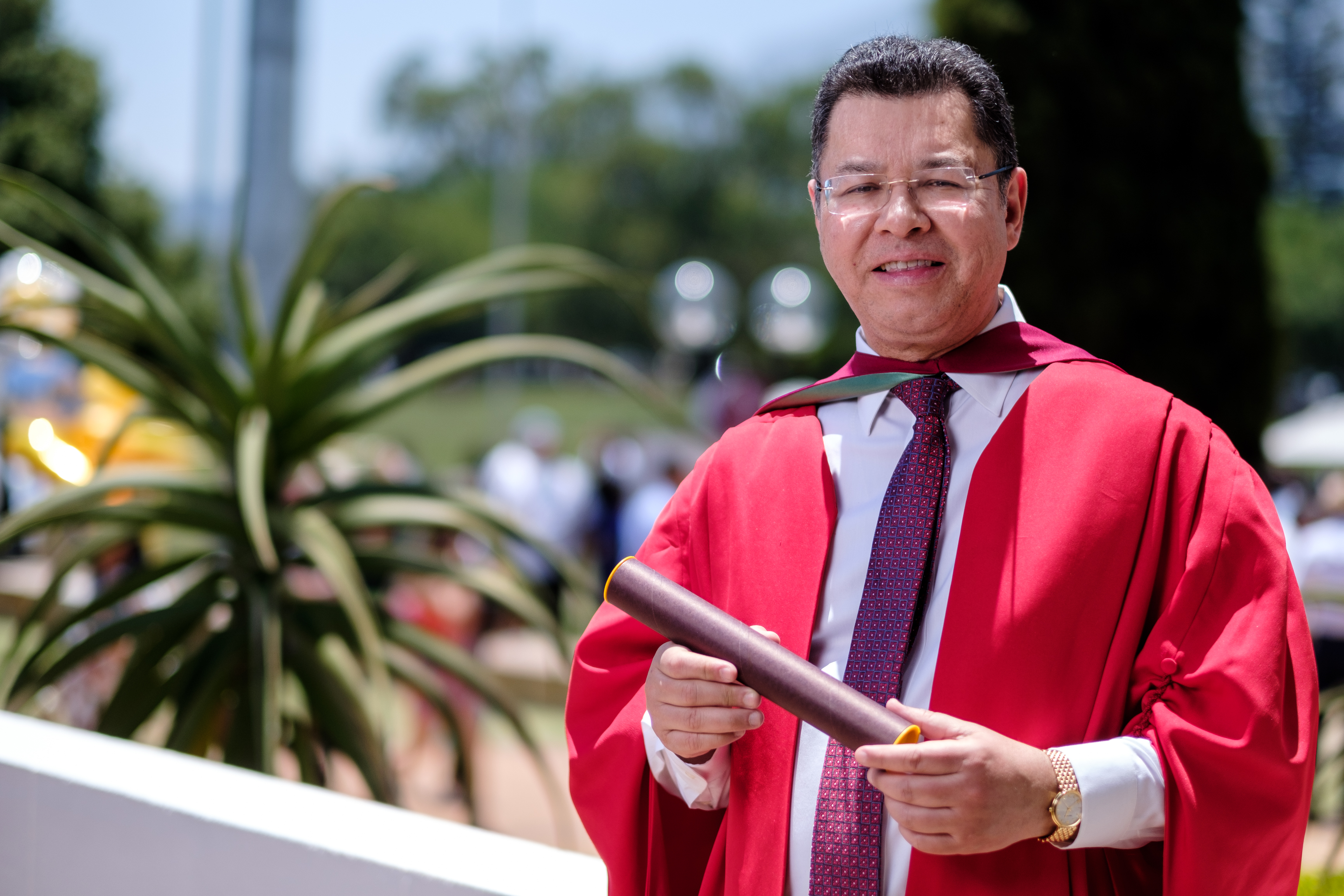Diabetic eye disease (diabetic retinopathy) is one of the leading causes of blindness globally and treatment can be quite expensive, especially in low and middle-income countries, including South Africa. But, there's hope for people with this condition. A recent doctoral study at Stellenbosch University (SU) found that a relatively cheap drug called bevacizumab may just provide the relief they need.
“We found that injecting bevacizumab into the eyes could help treat diabetic eye disease and prevent blindness in people living in low and middle-income countries," says Dr Jose Fernando Arevalo, Chairperson of the Department of Ophthalmology at the Bayview Medical Center in the Wilmer Eye Institute at the Johns Hopkins University School of Medicine in Baltimore in America. Arevalo, who is also the President of the Pan-American Association of Ophthalmology, obtained his doctorate in Ophthalmology on Tuesday (11 December 2018) at the second ceremony of SU's December graduation.
Arevalo says the rapid increase in the prevalence of diabetes means that by 2040 more people will be at risk of developing diabetic eye disease and therefore less expensive ways need to be found to treat the condition. Diabetic eye disease affects both people with Type 1 and Type 2 diabetes. It leads to a loss of vision caused primarily because of the build-up of fluid in the retina and the abnormal growth of blood vessels in the eye.
He says the aim of the research was to determine if injections with bevacizumab, sold under the brand name Avastin, are helpful in the management of complications of diabetic eye disease in low and middle-income countries. Arevalo adds that people in many high-income countries are already benefitting from bevacizumab injections, and other more expensive drugs. Used as cancer therapy, bevacizumab is available in low and middle-income countries. 
In several multicenter studies conducted in 13 Latin American countries, Arevalo investigated the effectiveness of off-label injections of bevacizumab as treatment for diabetic eye disease.
Highlighting the effect of bevacizumab, Arevalo says the research showed that “injections with bevacizumab, which has minimal side-effects, are effective against the build-up of fluid in the part of the retina crucial for sharp, detailed vision and the abnormal growth of blood vessels in the eye."
“Bevacizumab also helps to curb the protein that stimulates the abnormal growth of blood vessels and causes small aneurysms and increased vascular leaks of fluid."
“The study of 1265 patients who received 4303 eye injections of 1.25 mg or 2.5 mg of bevacizumab has shown that this procedure appears to be safe. Nowadays, only the lower dose of 1.25 mg is recommended."
Arevalo adds that primary injections with bevacizumab seem to provide stability or improvement in the clarity or sharpness of vision, by reducing the build-up of fluids measured by a scan of the retinal layers and a dye test of the retinal vessels.
Extreme care must, however, be taken in using a dose of 2.5 mg or more of bevacizumab as it can cause or worsen retinal detachment in advance cases of diabetic eye disease, says Arevalo.
He mentions that they have also demonstrated the usefulness of using pre-operative bevacizumab injections during minimal invasive surgery performed to remove fluid from the eye in patients where scar tissue on the retina has pulled it away from the layer underneath.
“Pre-operative bevacizumab injections seem to reduce bleeding during surgery, improve how the surgeon sees the eye during surgery, and reduce complications during and after surgery, including ruptures of the retina and post-operative hemorrhage."
Arevalo says in instances where eye surgery is needed, physicians should perform it preferably before five days after the application of bevacizumab injections and immediately on those patients in whom tractional retinal detachment occurs.
“We recommend less than 5 days after injections as more than 80% of the retinal detachments developed after that period of time. The injection can cause retinal detachments in 3.2% of the cases of very advance disease that needs surgical intervention. However, patients' vision improve after a less complicated surgery thanks to the use of bevacizumab."
In terms of affordability, Arevalo says people in low and middle-income countries would have easy access to bevacizumab.
“Bevacizumab is much cheaper per dose and more accessible compared to similar drugs on the market. A 4-ml vial containing 100 mg has a wholesale acquisition cost of 550 US dollars whereas other available drugs that are between 1,500 and 2,000 US dollars per dose. About 40-80 dosages (0.05 mL each) of bevacizumab injections can be prepared with one vial lowering the cost per treatment significantly."
- Main photo: Patient having an eye test (Pixabay).
- Photo 1: Dr Jose Fernando Arevalo at the graduation ceremony.
FOR MEDIA ENQUIRIES ONLY
Dr Jose Fernando Arevalo, MD FACS
Department of Ophthalmology
Johns Hopkins Bayview Medical Center
Retina Division, Wilmer Eye Institute
Johns Hopkins University School of Medicine
Baltimore, MD, USA
Tel: 410-614-4637
E-mail: arevalojf@jhmi.edu
ISSUED BY
Marin Viljoen
Manager: Media
Corporate Communication
Stellenbosch University
Tel: +27 (0) 21 808 4921
E-mail: viljoenm@sun.ca.za

